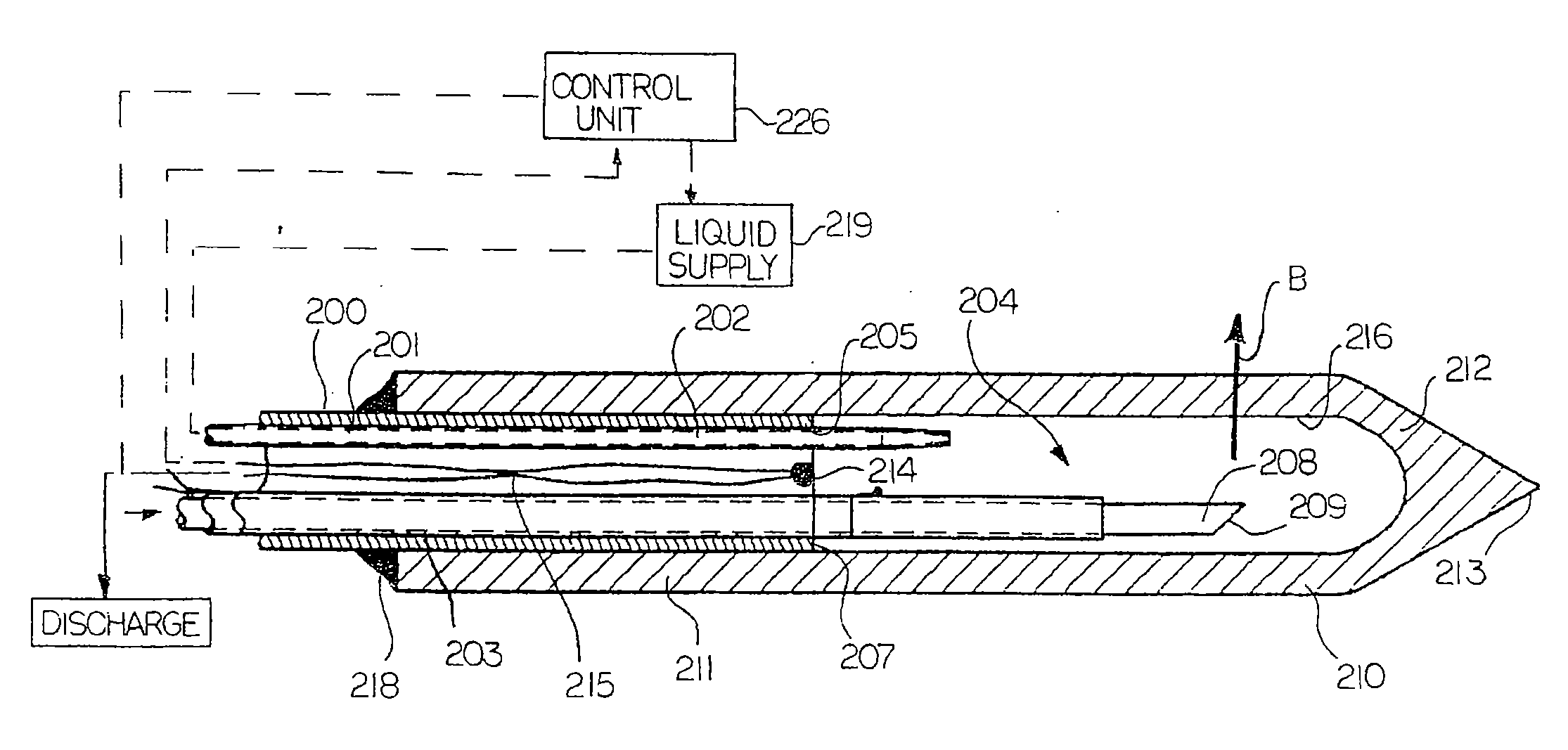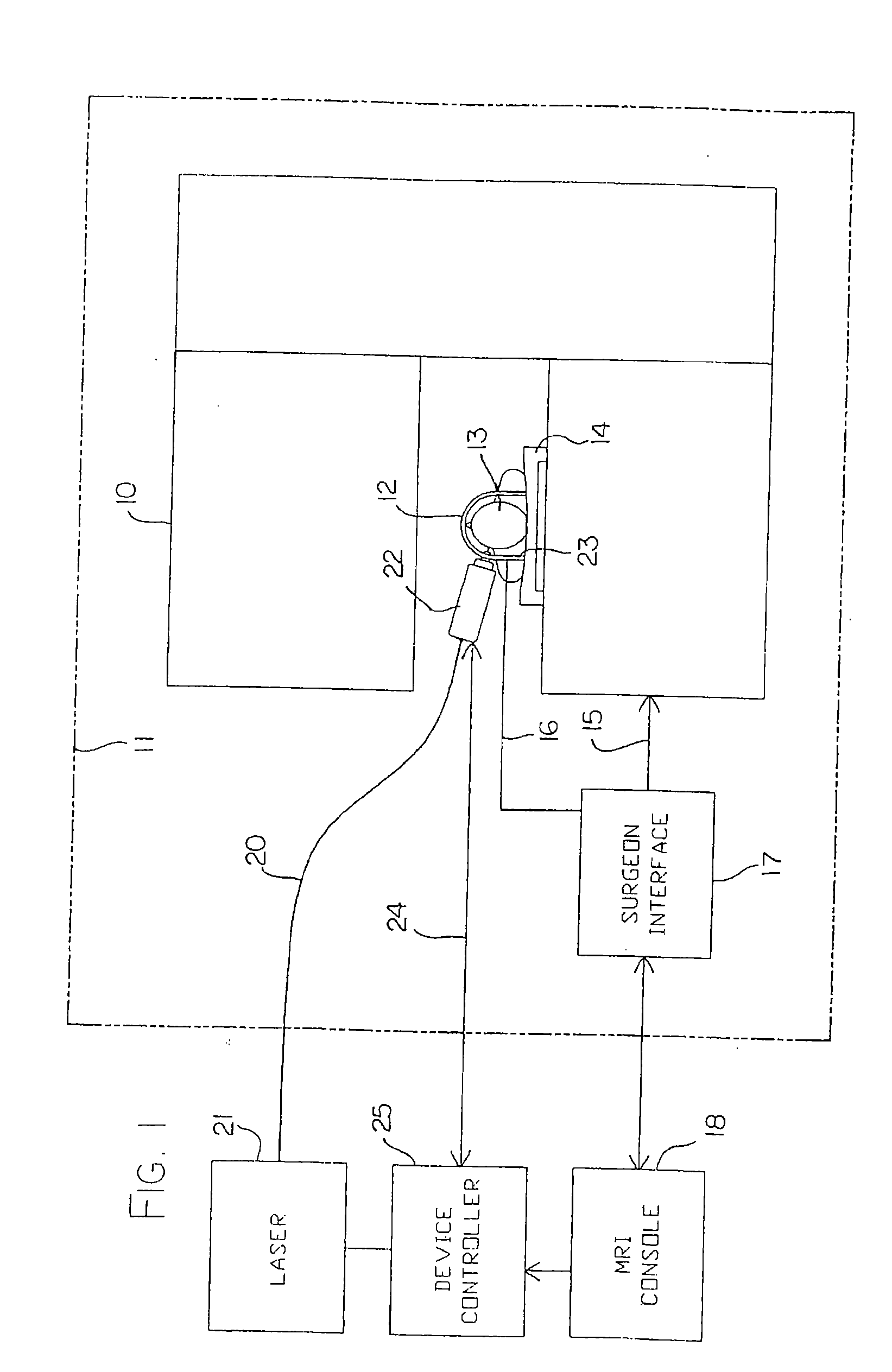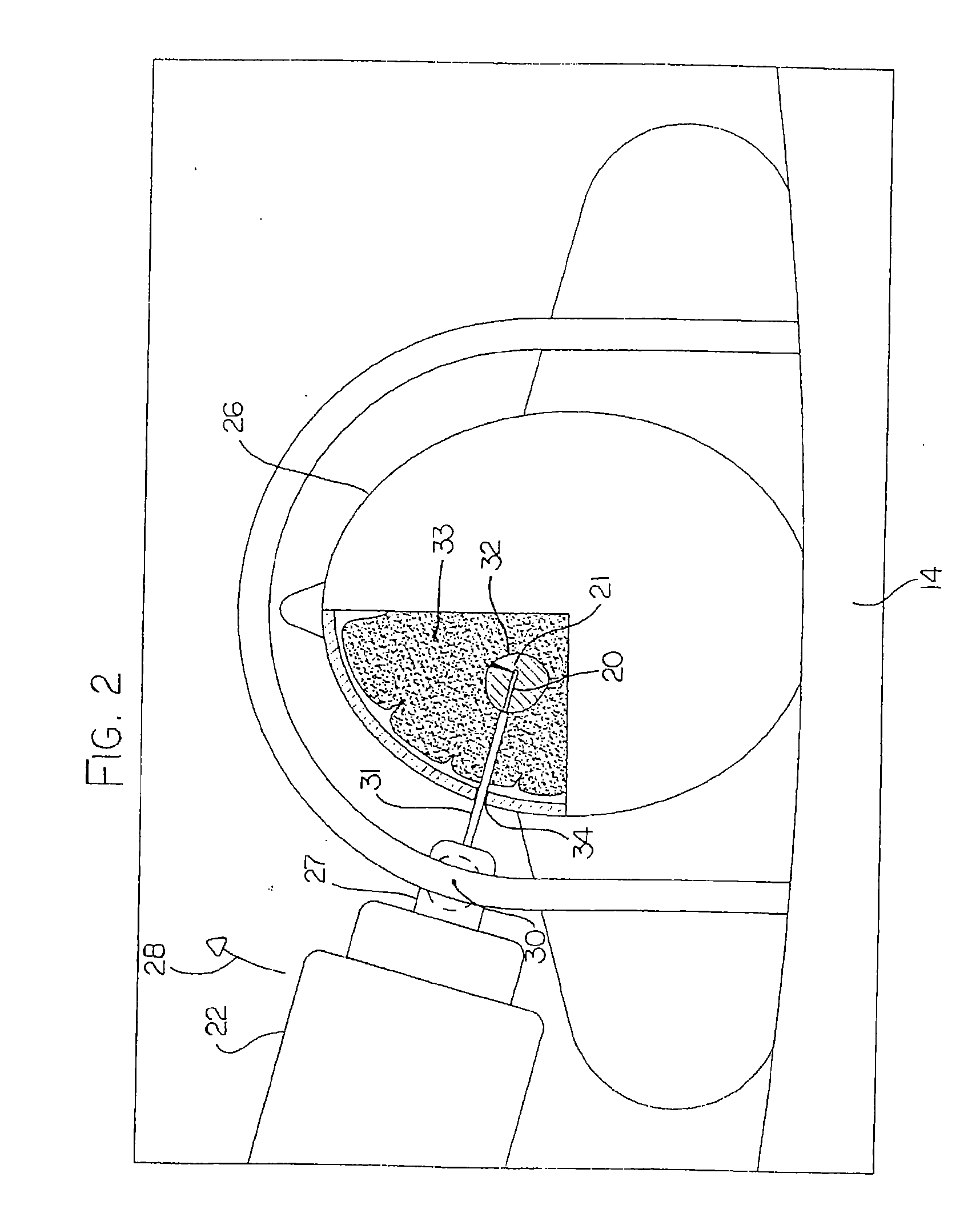Hyperthermia treatment and probe therefor
a technology of hyperthermia and probes, applied in the field of hyperthermia treatment and probes therefor, can solve the problems of difficulty for surgeons to achieve controlled heating, no system available, disclosure of patents, etc., and achieve commercially viable hyperthermic treatment systems
- Summary
- Abstract
- Description
- Claims
- Application Information
AI Technical Summary
Benefits of technology
Problems solved by technology
Method used
Image
Examples
Embodiment Construction
[0075] In FIG. 1 is shown schematically an apparatus for carrying out MRI controlled laser treatment. The apparatus comprises a magnetic resonance imaging system including a magnet 10 provided within a shielded room 11. The magnet 10 can be of any suitable construction and many different magnet arrangements are available from different manufacturers. The magnet includes field coils for generating variations in the magnetic field which are not shown since these are well known to one skilled in the art together with a radio frequency antenna coil which receives signals from the sample in this case indicated as a human patient 13.
[0076] The patient 13 rests upon a patient support table 14 on which the patient is supported and constrained against movement for the operative procedure. The fields of the magnet are controlled on an input control line 15 and the output from the antenna coil is provided on an output line 16 both of which communicate through a surgeon interface 17 to the con...
PUM
 Login to View More
Login to View More Abstract
Description
Claims
Application Information
 Login to View More
Login to View More - R&D
- Intellectual Property
- Life Sciences
- Materials
- Tech Scout
- Unparalleled Data Quality
- Higher Quality Content
- 60% Fewer Hallucinations
Browse by: Latest US Patents, China's latest patents, Technical Efficacy Thesaurus, Application Domain, Technology Topic, Popular Technical Reports.
© 2025 PatSnap. All rights reserved.Legal|Privacy policy|Modern Slavery Act Transparency Statement|Sitemap|About US| Contact US: help@patsnap.com



